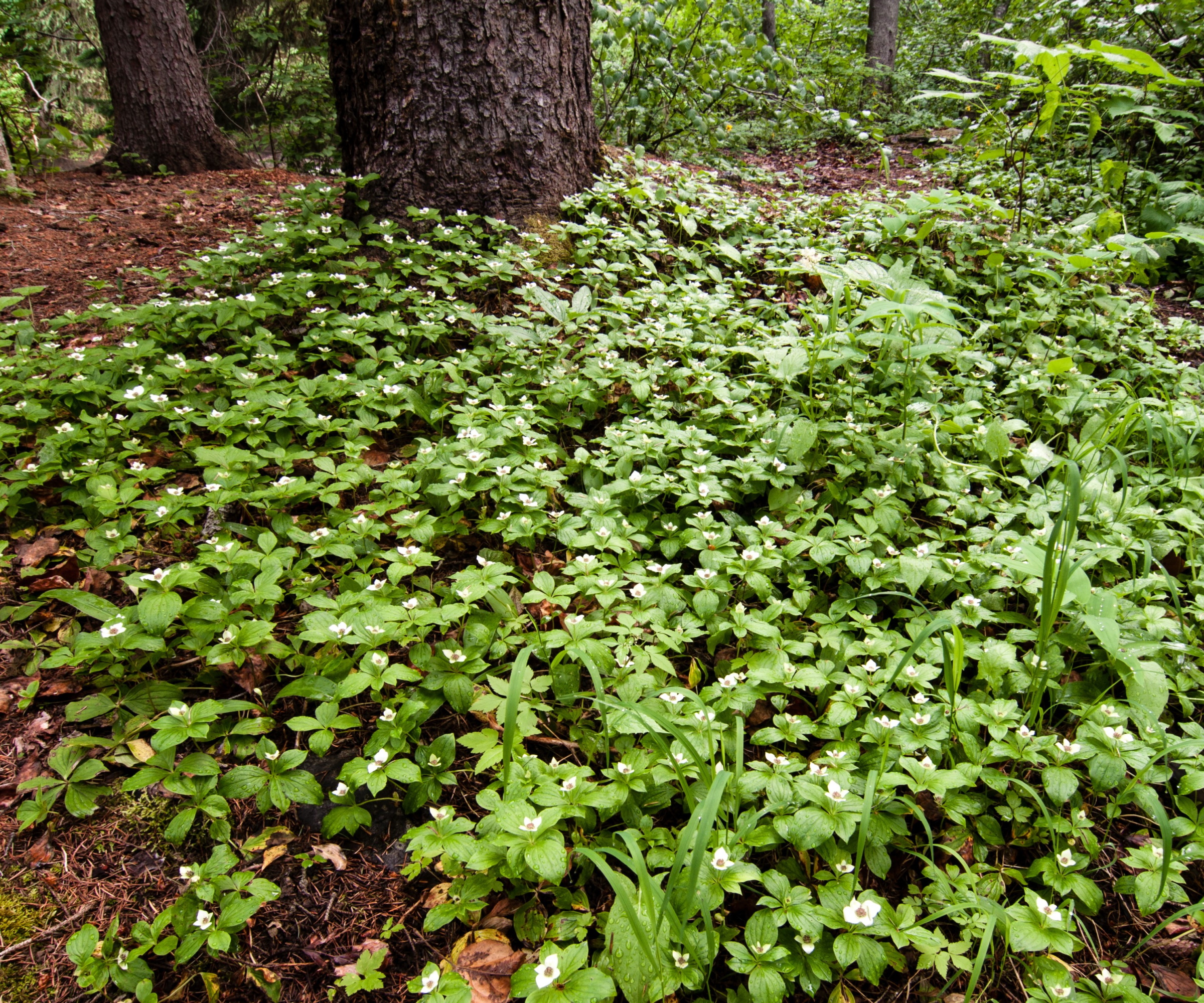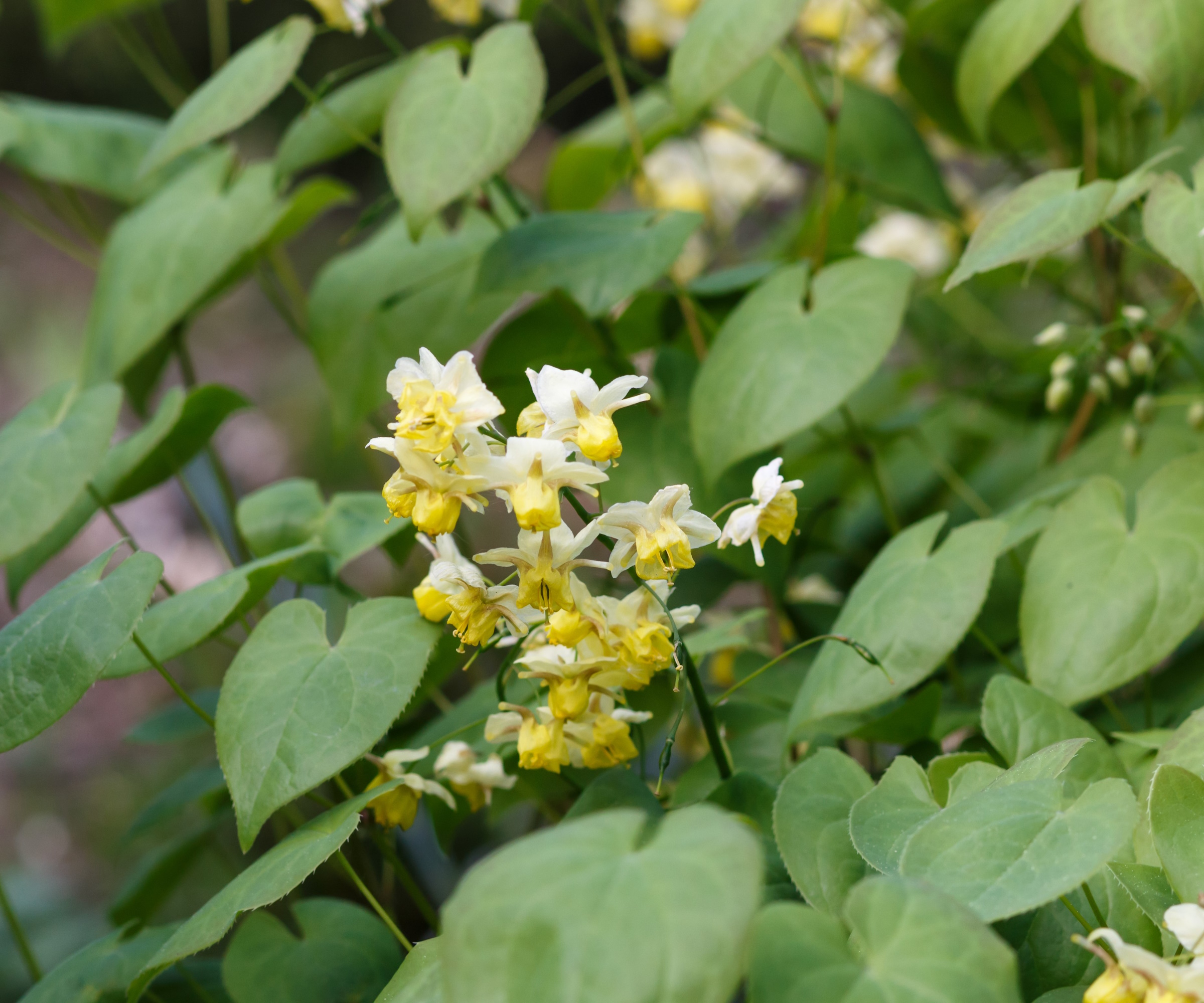Best ground cover plants to hide tree roots – expert-approved options to mask unsightly areas with greenery
These tough ground cover plants will hide buttress roots with striking foliage and flowers


Planting under trees can often be challenging. While we might enjoy having established trees in our yards that provide privacy and a sense of tranquility, it can be a struggle to grow any plants underneath.
Over time, roots may appear at the base of large trees, for example, maples and poplars naturally develop buttress roots with spreading root networks. While this is nothing to worry about, it can look unsightly, and let's face it, most of us would prefer borders full of blooms as opposed to a tangle of roots.
Fortunately, many of the best ground cover plants can help to add greenery to these challenging areas. As a former professional gardener, I have grown many shade-tolerant, drought-resilient and all-round tough ground cover plants that I know can help to cover tricky root-riddled borders. Here, I reveal five of the best options for you to try in your yard.

How to grow ground cover plants to hide tree roots
There are many different ground cover options to choose from, including ground cover plants to stop weeds and full sun ground cover plants. Most will prove to be tough and resilient, although when seeking to hide tree roots, it is best to opt for species that can tolerate dry soils and shady conditions.
In addition, I recommend planting small plugs or bare-root plants in these areas. If you try to plant larger pot sizes, bigger than one gallon, you may end up damaging the tree roots when digging and not planting deeply enough. My advice: start small and be patient. Over time, small plugs will establish and form expansive patches of lush greenery.
1. Bugleweed

Bugleweed is popular for its unique and attractive foliage, producing a dense carpet of green-purple foliage. Growing no bigger than three to five inches, bugleweed, Ajuga reptans, is often considered a ditch plant, meaning it can be grown almost anywhere and thrive.
Growing well in US hardiness zone 3 to zone 10, this tough ground cover can be slow to get started, but over time it will establish and fill tricky areas of the yard. In my experience, it does best when planted in part-shade, preferably in a spot with a few hours of morning or evening sunshine.
Design expertise in your inbox – from inspiring decorating ideas and beautiful celebrity homes to practical gardening advice and shopping round-ups.
In the UK, bugleweed can be managed and maintained, and I have never had a problem with its vigorous growth habit. However, in some US states, it is considered an invasive plant, so always check with your local municipality before planting.
Many online nurseries will supply small plug plants that can easily be planted among tree roots. Just remember to give them a good soaking after planting. Small bugleweed starter plants are available to buy from Walmart.
2. Bunchberry dogwood

If you are looking for a native ground cover, there can be no better option than bunchberry dogwood. This tough species is found in woodland areas across North America and can be grown from US hardiness zone 3 to US hardiness zone 6.
Bunchberry dogwood, Cornus canadensis, thrives in shady areas, and I would caution against planting in a sunny yard where it would struggle.
'Bunchberry dogwoods are superb native plants that will quickly form a dense green carpet,' says Dr Ross Bayton, Director at Heronswood Garden in Kingston, Washington. 'They are deciduous plants, so they do lose their foliage in the fall.
'However, in spring, they jump into life, and each stem will produce a large white flower before red berries emerge later in the growing season,' Ross adds.
Bunchberry dogwood can be planted in the spring or fall, or you can try your hand at growing from seed. It is best to sow seeds fresh in early fall, typically around October and November, for the best chance of success. Bunchberry dogwood seeds are available to order from Amazon.

London-born botanist and gardener Dr Ross Bayton gained his PhD at the Royal Botanic Gardens, Kew, studying the classification of tropical palms. He’s the author of several books on horticulture. He is now the director of the world-renowned Heronswood Garden in Kingston, Washington, and is developing a 5-acre garden at home in nearby Bremerton.
3. Epimedium

While less well-known, epimediums are resilient plants that will thrive when planted in a woodland environment. I have grown many different species of epimedium over several years when working as a professional gardener, but one of my favorites has to be 'Spritzer'. This variety produces cherry-red and yellow star-shaped flowers that, I think, are hard to beat when grown under a tree. Epimedium 'spritzer' live plants are available from Walmart.
Epimediums can be grown from US hardiness zone 5 and above. In my experience, they can take a little while to establish, so it might be two years or so until tree roots are hidden. However, the wait is worth it, as epimediums have the most unusual heart-shaped foliage, as seen here, which often turns golden-yellow in the fall.
Starter epimedium plants are available from Amazon.
4. Japanese spurge

Japanese spurge is often used by designers and landscapers seeking evergreen ground cover plants. Growing from US hardiness zone 5 to US hardiness zone 9, Japanese spurge is popular for its glossy evergreen foliage that can fill challenging areas of the yard.
I have grown Japanese spurge, Pachysandra terminalis, in many different gardens across London, and while it can be managed in the UK, it does tend to take over once established, so only plant this ground cover if you are willing to thin and restrict its growth every few years.
While Japanese spurge can be planted in sunny spots, I recommend planting in part shade as direct sun can turn the foliage yellow. When planting near trees, it is a good idea to start with bare-root plants, which can be easier to establish in the limited soil. I suggest planting in the fall months and be sure to water your plants frequently in the first year.
Japanese spurge bare-root plants can be ordered online from Walmart.
5. Green and gold

This tough native plant can be grown from US hardiness zone 4 plus, quickly forming a dense mat of green foliage complemented by striking yellow blooms. It is a low-growing ground cover, reaching no more than five inches tall.
Green and gold, Chrysogonum virginianum, is a perennial plant that belongs to the Asteraceae - or daisy - family and is found growing in woodlands across New York State, Louisiana and Florida.
Thriving in shady, rich soils, green and gold is a quick spreader when grown under large shrubs and trees. What's more, this native plant is incredibly long-flowering and will produce a mass of yellow blooms from April through to the first frost.
Plant green and gold in either the spring or the fall, watering deeply in the first year. Green and gold plants are available to order from Amazon.
FAQs
Will ground cover plants prevent my tree from absorbing water?
Ground cover plants can prevent trees from accessing water, absorbing moisture in the soil before it reaches the tree's roots. However, large shrubs and trees often have expansive roots that spread outwards and downwards so can easily find water elsewhere in the soil. In long, hot spells, you can complete some deep watering, positioning a slow-running hose at the base of the tree for 20 minutes or so, but in my experience, larger specimens will not mind the addition of ground cover.
When choosing ground cover plants to hide tree roots, whatever your selection, ensure that the species is drought-resilient and shade-tolerant. While these areas can be challenging, with plenty of competition for water and nutrients, opting for tough plants will improve your chances of success.
If you are looking for something unusual, consider planting tradescantia as a ground cover. This native plant can be grown as a perennial in warm regions from US hardiness zone 8. There are purple, pink, green and variegated options, making for a unique plant to hide tree roots. One striking pink and purple option is Tradescantia Nanouk, available from Walmart, which is sure to turn heads.

Thomas is a Content Editor within the Gardens Team at Homes and Gardens. He has worked as a professional gardener for both public spaces and private estates, specializing in productive gardening, growing food and flowers. Trained in Horticulture at the Garden Museum, he has written on gardening and garden history for various publications, including The English Garden, Gardens Illustrated, Hortus, The London Gardener and Bloom. He has co-authored a Lonely Planet travel book, The Tree Atlas, due out in 2024.